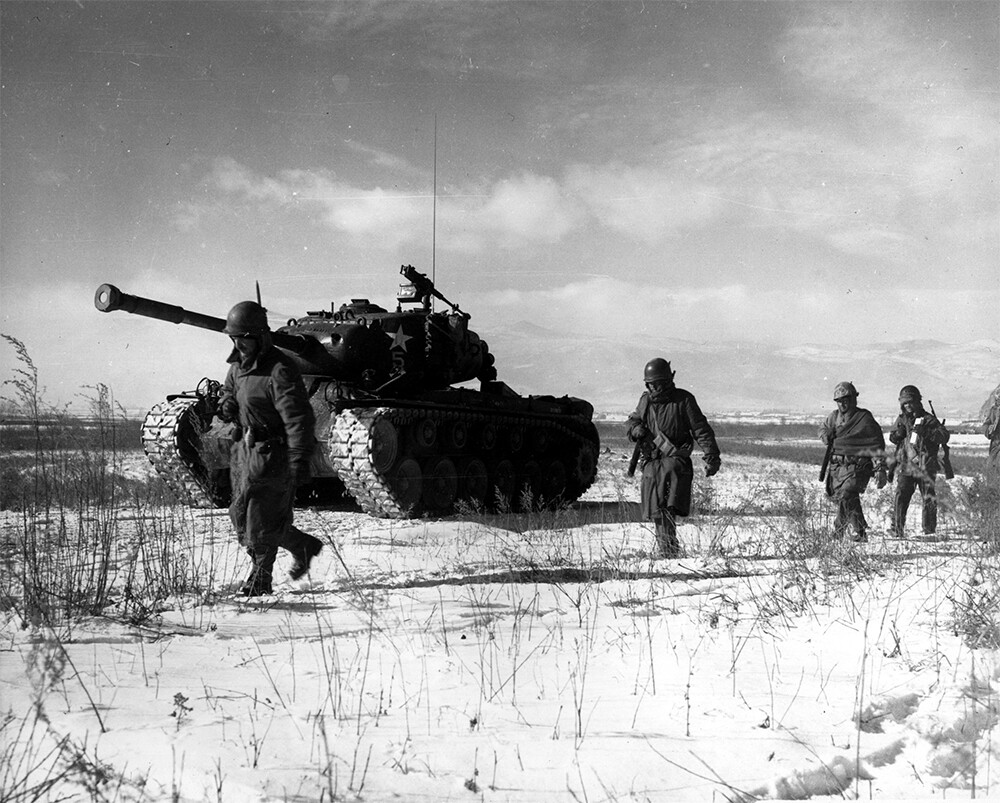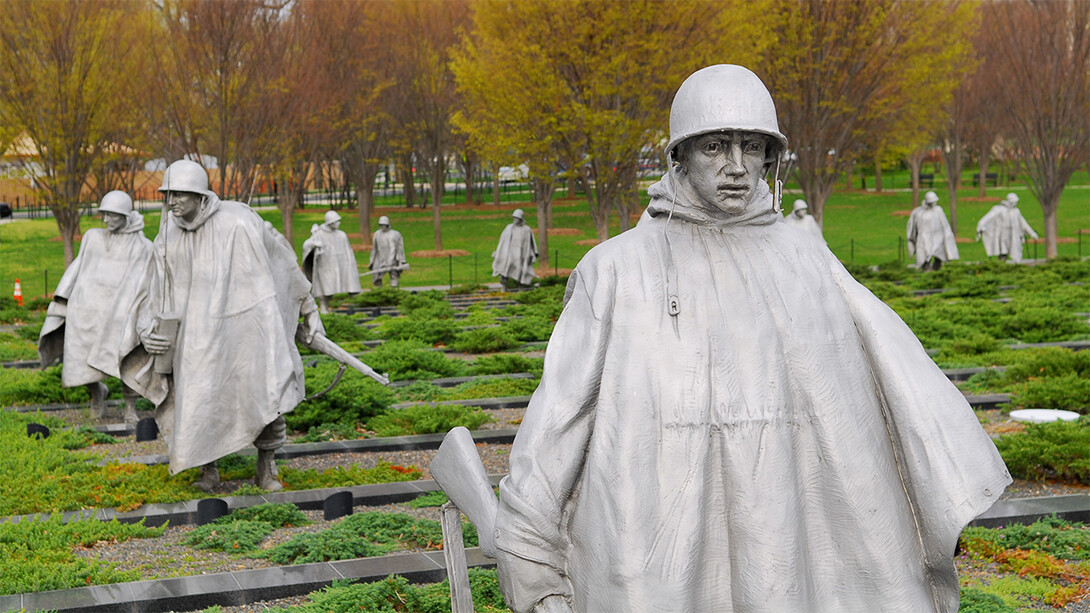
In the subzero twilight of Nov. 27, 1950, embedded next to the Chosin Reservoir and surrounded by the slopes of treacherous terrain, the 1st Battalion, 7th Regiment of the 1st Marine Division found itself at the center of a closing circle — and an early but crucial battle in the Korean War.
Over the following 17 days, roughly 120,000 Chinese troops would descend on the reservoir in the heart of North Korea, outnumbering the U.S. Marines and their fellow United Nations Command troops by about 4-to-1. The Marines, in a display of valor and will that would earn them a place in U.S. military lore, eventually broke free of the tactical snare, fighting their way to the port of Hungnam and evacuating with more than 80,000 North Korean refugees in tow.
Seven decades later, the University of Nebraska–Lincoln’s Karl Reinhard and colleagues have published findings that help illuminate the final days, and final meals, of a Marine who died fighting what is considered one of the most harrowing battles in the history of modern warfare.

An expert in the analysis and identification of pollen, Reinhard has spent much of his career examining the gut contents of mummified remains, often to help discern how a person died. In the case of the private first class whose remains were brought to Reinhard’s attention by Gregory Berg, a lab case manager with the Defense POW/MIA Accounting Agency, the cause of death was already clear: a bullet wound.
But the researchers knew that the contents of the gut can also yield clues about how a person lived. So they set out to learn more about how the private first class survived the frenzied 12 days between the onset of the massive Chinese counterattack and the PFC’s demise on Dec. 8, 1950. They focused on a question that, with supply lines disrupted and rations running low, would have eventually consumed even a Marine surrounded by a seemingly endless barrage of enemy reinforcements: What was the PFC to eat? How would he sustain himself?
“This reveals the individual struggle of a soldier to survive in the far larger struggle imposed by liberating Korea,” said Reinhard, a professor in the School of Natural Resources at Nebraska. “It is a reflection on so many individual struggles that result from global conflict.”

Reinhard began preparing and analyzing the fossilized intestinal contents with help from Nebraska alumna Brianna Neu and Marina Milanello do Amaral, a forensic botanist working in Sao Pãulo, Brazil. Unusual challenges abounded. The abnormally heavy, rock-hard specimen actually snapped the blade of Reinhard’s scalpel when he tried to section it, probably due to the presence of a preservative. A standard rehydration procedure failed, likely for the same reason. More troublingly, microscopic components of the sample, including pollen, resisted the team’s initial efforts to separate them for analysis.
Ultimately, their years-long persistence would pay off. Based on comparative analyses of pollen, seed remnants and other microscopic bits of resilient plant tissue, the team determined that the PFC subsisted mostly on the stems, roots and leaves of plants that belong to the rose family. One telltale? Striation patterns particular to the pollen of that family. Reinhard’s mind immediately went to the family’s many edible fruits: strawberries, apples, cherries, among dozens of others.
Instead, the team would conclude that the seeds came from Potentilla, a genus of plants commonly called cinquefoils. Unlike their cousins in the rose family, Reinhard said, cinquefoils can very much be called a famine food — eaten only in times of extreme scarcity and, regardless of the quantities consumed, not nearly nutritious enough to nourish anyone for long.
“Who would think that Potentilla would have been consumed?” Reinhard said of his initial mindset. “It wasn’t even on my radar to compare this striation to something that is pretty much inedible unless you’re absolutely starving.
“It is super-low in nutrition. I would put it at marginally unpalatable. The only benefit is (that) it provides roots and stems and super-dry fruits that can fill somebody’s belly.”
The team did also find remnants of mustard seeds, leading it to wonder whether the PFC might have been able to procure kimchi or sausage from residents of the area. But closer analysis dispelled that notion, suggesting that, just as with the Potentilla, the PFC scavenged the seeds from mustard plants growing in the countryside or a local village.
“They were pretty much in the same condition they would have been raw,” said Reinhard, who noted that raw mustard seeds are not generally part of traditional Korean or Chinese cuisine. “That’s an indication that these weren’t softened by boiling, by baking, by cooking in a meat or by fermenting.”
Though not every Marine in the Battle of Chosin Reservoir faced food shortages, Reinhard said some in the 7th Regiment, at least, likely had to adopt the PFC’s hardscrabble diet while contending with the constant threats of frostbite, jamming weapons and the overbearing rush of Chinese forces.
The team’s findings, the latest in a long line of forensic collaboration between the United States and the Republic of Korea, help clarify an oft-overlooked challenge of combat in an oft-overlooked conflict, Reinhard said. Yet they also demonstrate a resourcefulness, he said, in the PFC’s refusal to surrender to being denied the most undeniable of human needs.
“There is a story of human resilience in this,” he said, “that this fellow was able to continue fighting despite the fact that he had totally inadequate nutrition.
“It is beyond words, beyond comprehension, that these folks would be struggling to fight their way out of the Chinese encirclement with apparently no rations, and in such debilitating circumstances. It’s just astounding to me.”








